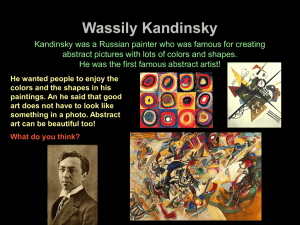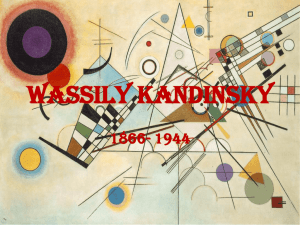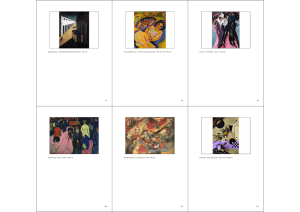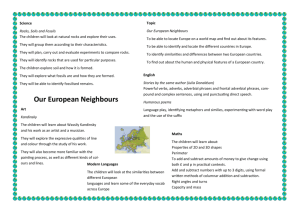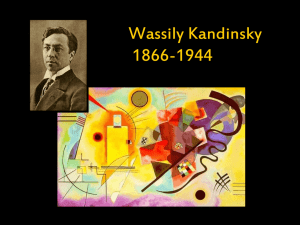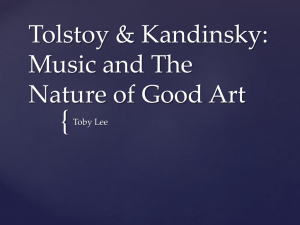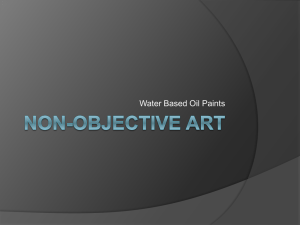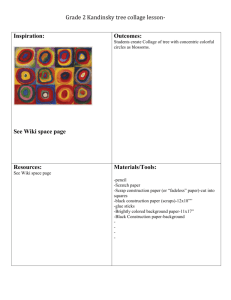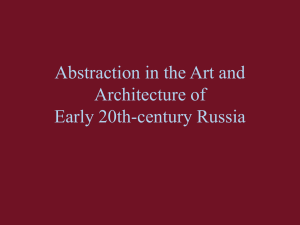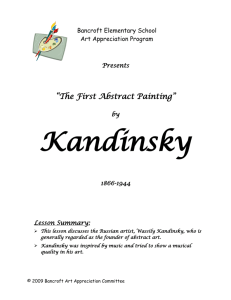kandinsky: compositions
advertisement
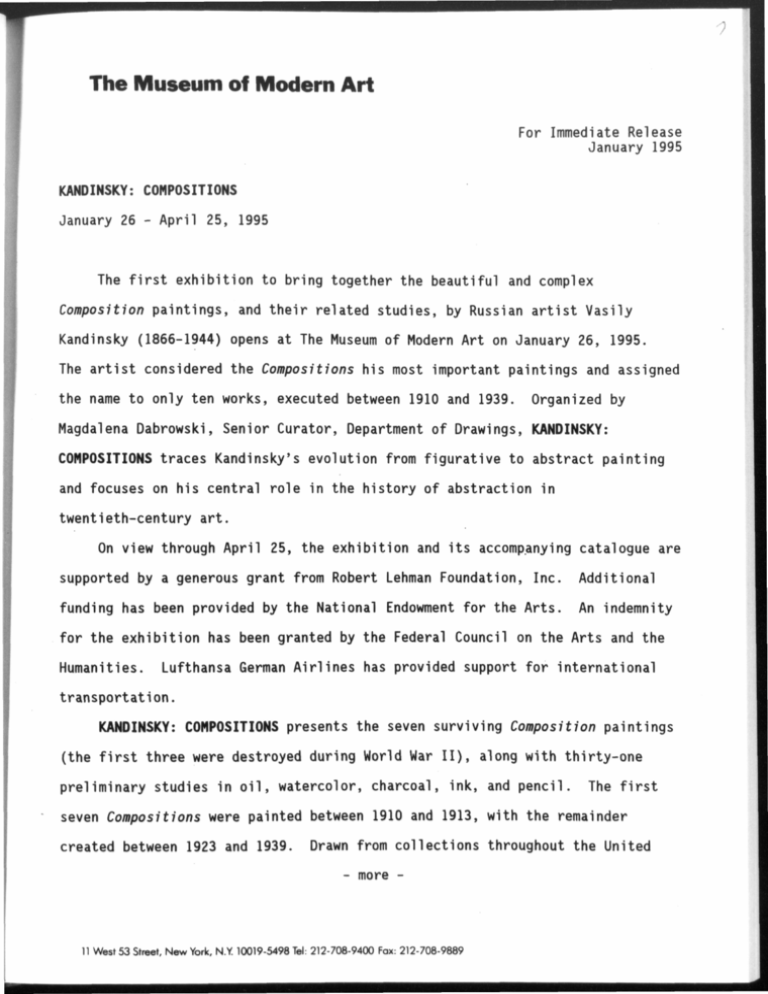
The Museum of Modern Art For Immediate Release January 1995 KANDINSKY: COMPOSITIONS January 26 - April 25, 1995 The first exhibition to bring together the beautiful and complex Composition paintings, and their related studies, by Russian artist Vasily Kandinsky (1866-1944) opens at The Museum of Modern Art on January 26, 1995. The artist considered the Compositions his most important paintings and assigned the name to only ten works, executed between 1910 and 1939. Organized by Magdalena Dabrowski, Senior Curator, Department of Drawings, KANDINSKY: COMPOSITIONS traces Kandinsky's evolution from figurative to abstract painting and focuses on his central role in the history of abstraction in twentieth-century art. On view through April 25, the exhibition and its accompanying catalogue are supported by a generous grant from Robert Lehman Foundation, Inc. Additional funding has been provided by the National Endowment for the Arts. An indemnity for the exhibition has been granted by the Federal Council on the Arts and the Humanities. Lufthansa German Airlines has provided support for international transportation. KANDINSKY: COMPOSITIONS presents the seven surviving Composition paintings (the first three were destroyed during World War II), along with thirty-one preliminary studies in oil, watercolor, charcoal, ink, and pencil. The first seven Compositions were painted between 1910 and 1913, with the remainder created between 1923 and 1939. Drawn from collections throughout the United - more - 11 West 53 Street, New York, N.Y. 10019-5498 Tel: 212-708-9400 Fax: 212-708-9889 2 States and Europe, including the Hermitage Museum in St. Petersburg and The Tretyakov Gallery in Moscow, many of the works have never before been seen in this country. In his work, Kandinsky emphasized the process of creation and the value of pure painting, as opposed to subject matter. He firmly believed color and form The Composition possessed affective powers independent of the object. series demonstrates how successfully Kandinsky manipulated color and form, thus pioneering the development of abstract painting. Together the works in the exhibition reflect the artist's search for a formal language that would powerfully express his philosophical and spiritual concerns. Arranged chronologically, the exhibition begins with an exploration of Composition J, which like Compositions and-white reproduction. II and III, is known only through black- An early study for Composition J, a small untitled pencil sketch of a man on horseback, is clearly figurative. same years, 1909-10, the final study for Composition II Made within the depicts similar subject matter; however, more attention is paid to grouping and equilibrium, less to individual motifs. Kandinsky realized too great an emphasis on line rendered work ornamental andfdetracted from its spiritual meaning. By emphasizing color and balance, he laid the foundation for his increasingly nonrepresentational style. Composition IV (1911), one of Kandinsky's most visually compelling canvases, also incorporates the familiar motif of the horsemen, but abstracted and reduced to pictographic signs. The representational elements have been veiled, and, as a result, the painting's emotional impact is expressed through arrangements of color, form, and symbol. It thus fulfills Kandinsky's objective - more - to create by "pictorial means, which I love above all other artistic means, 3 pictures that as purely pictorial objects have their own independent, intense life." For Kandinsky, the principle in the creation of a Composition was the "expression of feelings" or "inner necessity" through purely pictorial means. Although he clearly identified Composition VI (1913), a dense mass of interacting and dissolving forms, as the Deluge, it is neither the painting's descriptive nor narrative aspects that are important. What is essential is that the idea and sound of the word deluge conjure a feeling in the viewer just as they had in the artist. Kandinsky believed that this "inner sound" of the picture was crucial to its success and the key to its understanding. The artist's development of a formal language that shifted focus from the external and representational to the internal and spiritual culminated in Composition (1913). VII Imagery related to the biblical themes of catastrophe and subsequent renewal is abstracted and universalized through form, color, movement, and balance. A decade passed before Kandinsky painted his next Composition while teaching at the Bauhaus. in 1923, During a period he spent in Russia from 1915 to 1921, he had grown away from the expressionistic elements of his prewar Compositions toward a cooler, more geometric, abstract idiom. Composition VIII is characterized by balanced arrangements of geometric forms in dynamic relationships, which play a greater expressive role than color. work was apocalyptic, Composition Composition the series. VIII Where earlier presents repose. X, painted between December 1938 and January 1939, completes It reveals Kandinsky experimenting with a new vocabulary of free forms and positive-negative relationships, while returning to an earlier - more - 4 emotional intensity. In this large canvas, the multicolored forms, which recall Russian folk-art paper cut-outs, interact dynamically while floating in an infinite space. The painting's striking black background lends special brilliance to the colors and makes both them and the forms vibrate. Although Kandinsky disliked black, characterizing it as the "inner sound of nothingness," he used it to create a mood and provide a relief for the colors and forms placed against it. Composition X, Kandinsky's last major artistic statement, embodied his pictorial and spiritual preoccupations and ambitions of the time, while bringing his creative life full circle. Ms. Dabrowski writes in the catalogue to the exhibition, "Kandinsky's Compositions extend beyond the territories of Cubism, Futurism, and the movements of his contemporaries. Motifs evolve and transform as he charges new worlds of form and color with the driving energy he called his 'inner necessity.' In decoding the visual thoughts and studies he has entwined in these ambitious and compelling works, we gain further insight into Kandinsky's epic process of creation." After its New York showing, the exhibition travels to the Los Angeles County Museum of Art (June 1 - September 3, 1995). * PUBLICATION * * Kandinsky: Compositions, by Magdalena Dabrowski. 128 pages. 39 color and 66 black-and-white illustrations. Published by The Museum of Modern Art. Hardbound, $39.95, distributed in the United States and Canada by Harry N. Abrams, Inc., New York; paperbound, $22.50; both available at The MoMA Book Store. No. 2 For further information or photographic materials, contact Mary Lou Strahlendorff, Department of Public Information, 212/708-9755.
